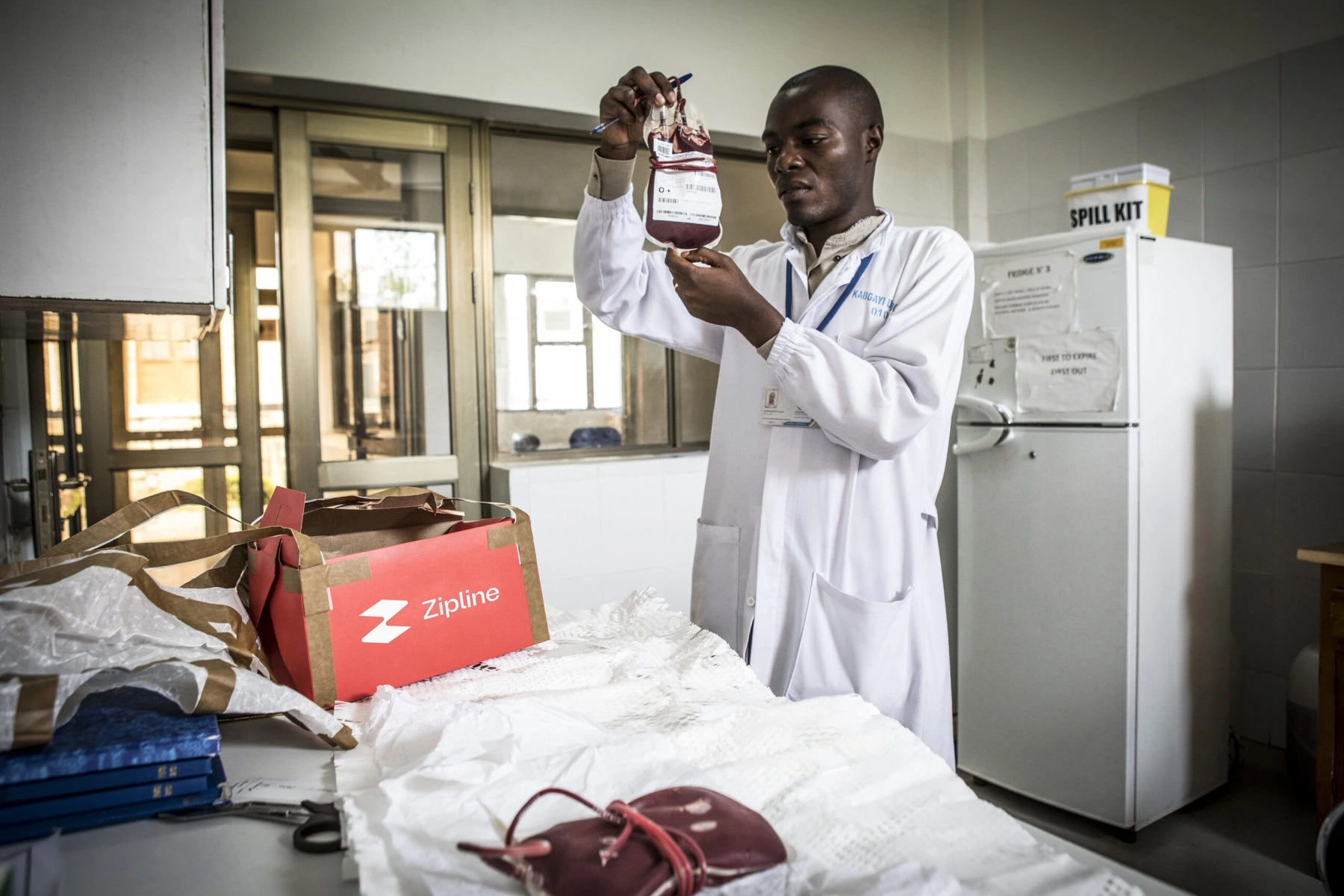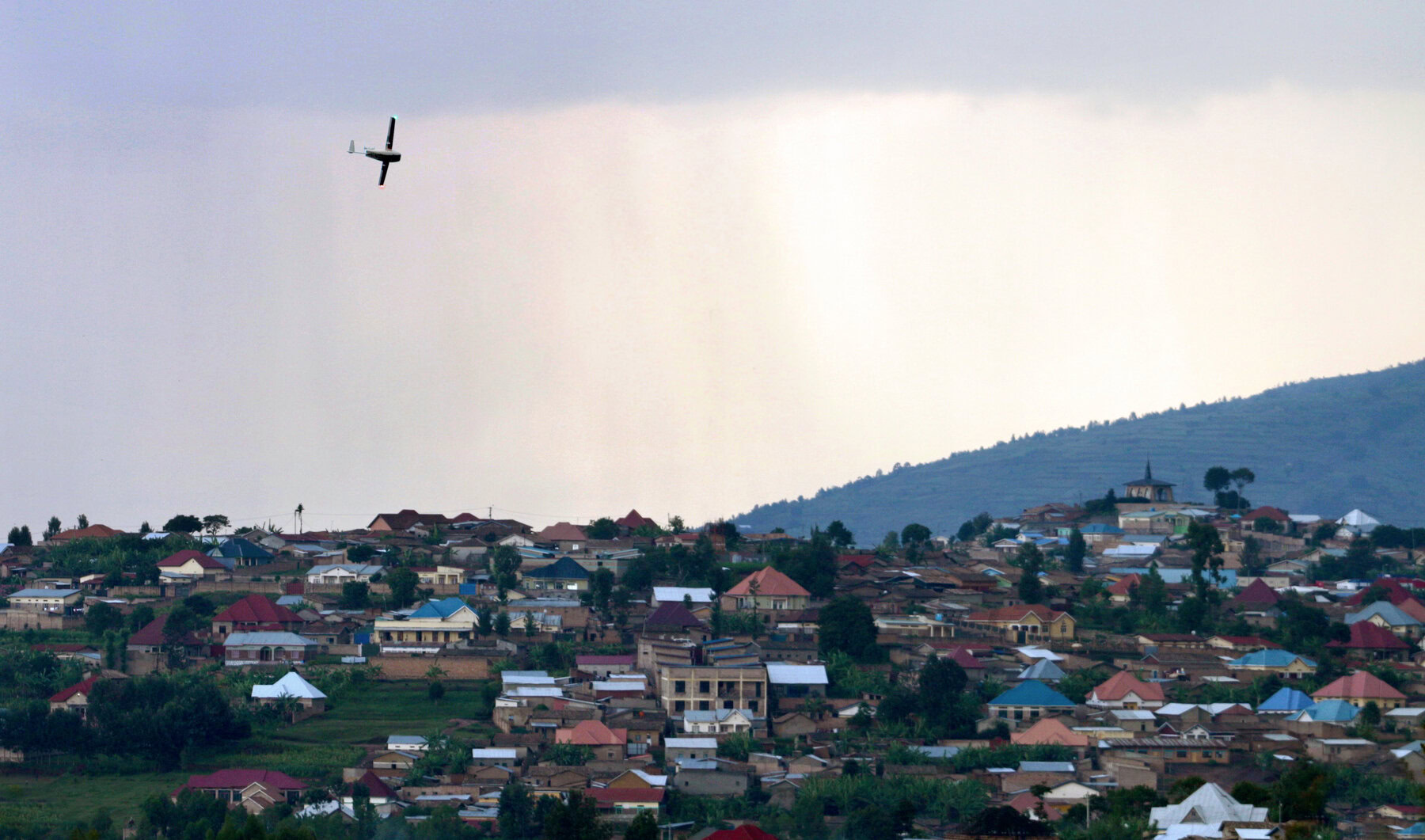Five minutes before midnight on the last day of 2023, a doctor in northern Rwanda sent a WhatsApp message requesting supplies. His patient, a woman who had just given birth, was hemorrhaging.
By land, it would take about four hours to reach this region of the mountainous country. Instead, the journey took just 18 minutes. A drone dropped a red box, containing a blood product that supports coagulation, with a white paper parachute outside the medical center.
But after the treatment, the woman was still struggling.
“Within another 10 minutes we were able to send blood to save the young mother,” says Pierre Kayitana, the Rwanda general manager for Zipline, the company that operates the drone system that serves medical centers across the central African country.
Drones are helping to solve similar issues in remote regions around the world. Unmanned flights have brought vaccines for babies and pregnant women to a remote village in the Pacific island nation of Vanuatu. Rural communities in Uruguay are receiving medicines and breast milk. Stellat’en First Nation community members in northern British Columbia have avoided long trips to the closest pharmacy with prescription deliveries via drone. And drones are starting to be used in the US to deliver medications to people’s homes.
Rwanda, Malawi and Ghana were among the first countries to explore the potential of drones in health systems. In some African regions, unpaved or washed out roads hinder distribution of medical supplies. Weather extremes also play a role: High temperatures can impact sensitive materials, like vaccines and test samples.
“It is very hard for people to really access care,” says Edwin Ambani Ameso, a University of Leipzig researcher who has studied the impact of drones on health systems in Malawi and Ghana. Some regions, like southern Malawi, are prone to storms, “meaning that there’s this constant cutting off of people from routine care infrastructures.”

Drone companies have particularly had an impact on the delivery of emergency medical supplies that can be difficult to keep in stock because of scarcity or storage restrictions, such as supplies related to blood transfusions.
The Silicon Valley-based company Zipline started working in Rwanda in 2016 with a focus on blood products. Access to blood for transfusions is particularly important for maternal mortality. Worldwide, severe bleeding is the largest cause of death related to childbirth; in Rwanda, postpartum hemorrhaging was the cause of 22.7 percent of maternal deaths between 2009 and 2013.
Weighed down by negative news?
Our smart, bright, weekly newsletter is the uplift you’ve been looking for.But driving between remote regions in Rwanda can take hours, so effectively managing supplies of blood products to ensure that they were on hand when needed was a challenge. Blood has a short shelf life, and the right types must be available when needed.
“It was very complex to start knowing where exactly to store which type of blood because you never know where the emergency will be coming from,” says Kayitana.

With the introduction of Zipline drones, the country’s blood inventory management system shifted from one that required regular deliveries to transfusion centers across the country to a system where medical centers could order blood to be delivered on demand. Now, Zipline drones can reach almost anywhere in the country outside of the largest city, Kigali, and the majority of deliveries take less than an hour. Since Zipline launched in Rwanda, it has made more than one million deliveries.
The technological change has had a big impact on Rwanda’s blood supplies. Health facilities are keeping less blood in stock, which means less is going to waste. University of Pennsylvania Wharton School researchers found a 40 percent decrease in wastage of red blood cells. Medical providers are also using certain difficult-to-store products more often. The use of platelets — a treatment that supports blood clotting, but which most facilities can’t keep in stock because of strict storage requirements — increased by 178 percent.
The improvements in health outcomes are concentrated in medical centers that are closer to Zipline’s two hubs, which have shorter flight times than more remote facilities. And the benefits are most prominent for postpartum hemorrhaging — researchers found no difference for in-hospital mortality related to vehicle accidents, for instance. But the system shows a lot of promise.
“Drones can significantly improve last-mile delivery for high-cost, perishable, or low-demand products prone to wastage,” writes Hummy Song, a Wharton assistant professor, in an email. “The benefits are likely to extend to other health products with similar characteristics.”
On a hot day in Malawi, temperatures can reach more than 100 degrees. When there are tuberculosis outbreaks, that makes it hard to manage test samples, which need to be kept at room temperature and processed within 48 hours.
Wingcopter is one of more than a dozen private and public entities that have operated in Malawi’s Humanitarian Drone Testing Corridor, an initiative launched with UNICEF in 2017, which has seen the technology used for environmental monitoring, Wi-Fi connectivity and public health.
During Wingcopter’s most recent project in Malawi, over the course of 18 months, drones delivered everything from pills to Covid-19 supplies to childhood vaccines to 28 health centers in the testing corridor and in two other regions. The company mainly works with medical centers far from paved roads, and focuses on small-scale deliveries of emergency and time-sensitive items.
“We’re not going to replace a 10,000-ton truck that’s bringing all kinds of medical supplies,” says Fisanich.

Ameso has seen first hand how drones can help people access emergency medical care. He’s seen people cross borders in order to reach regions served by drone deliveries, such as from Mozambique to Malawi. Women from Burkina Faso cycled to Ghana on borrowed bicycles.
But often, the rural health systems in which drones are operating are under-resourced and understaffed. While drones move items around quickly, they are constrained by countries’ broader shortages and supply chain issues. Ameso witnessed a patient with a cobra bite who had anti-venom delivered by drone. The patient needed two doses but the drone’s hub had only one available, so the patient needed to travel to a bigger town nearby in order to complete the treatment.
“There’s this promise, but then on the other hand, there are these realities of the bottlenecks,” Ameso says.
Ameso also sees bigger questions of resource allocations. For instance, Zipline’s contract with Ghana in 2019 totaled $12 million. Given the systemic challenges within health systems, Ameso says it’s important to consider whether this technology is the best use of such a substantial investment.
As of this spring, Zipline drones were dropping packages in the backyards of about 30 Intermountain Health patients, often medications that need to be kept at cold temperatures, with plans to expand its geographic reach and patient capacity. Zipline is also delivering products in Arkansas in partnership with Walmart, and is working with health systems in other areas, including Michigan and Ohio, to begin to offer drone services.
Intermountain Health is looking ahead at how drones may be used, especially as Zipline prepares to launch a new craft that will be able to land and take off from multiple locations. Dan Duersch, supply chain development director of Intermountain Health, sees potential to pick up samples from the health network’s more distant facilities to bring them to the central lab to be processed. They could also offer home-delivery to people in more rural areas, or who have mobility and accessibility limitations that make it hard to get to a pharmacy.
“It’s really opened a lot of discussions here in Utah,” says Duersch.
Scrolling videos appear courtesy of Zipline. Scrolling images appear courtesy of Wingcopter.


